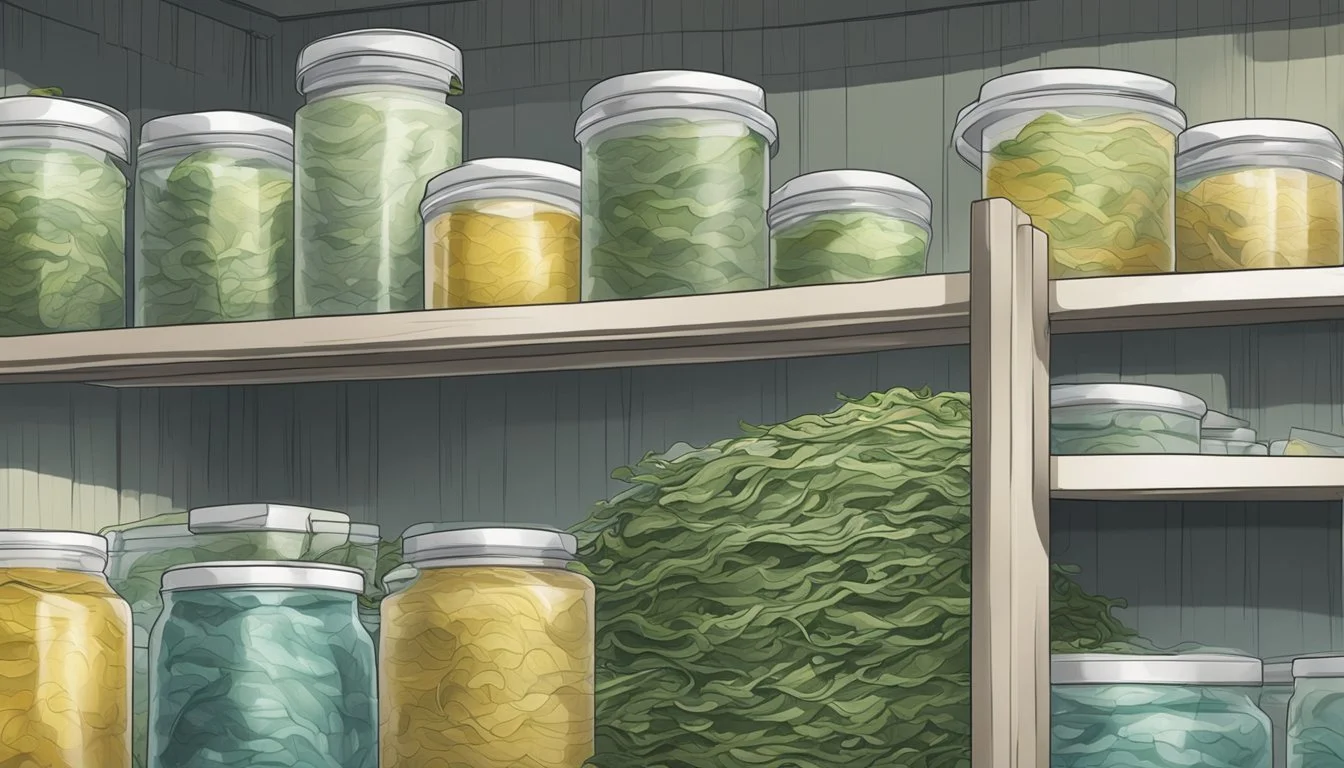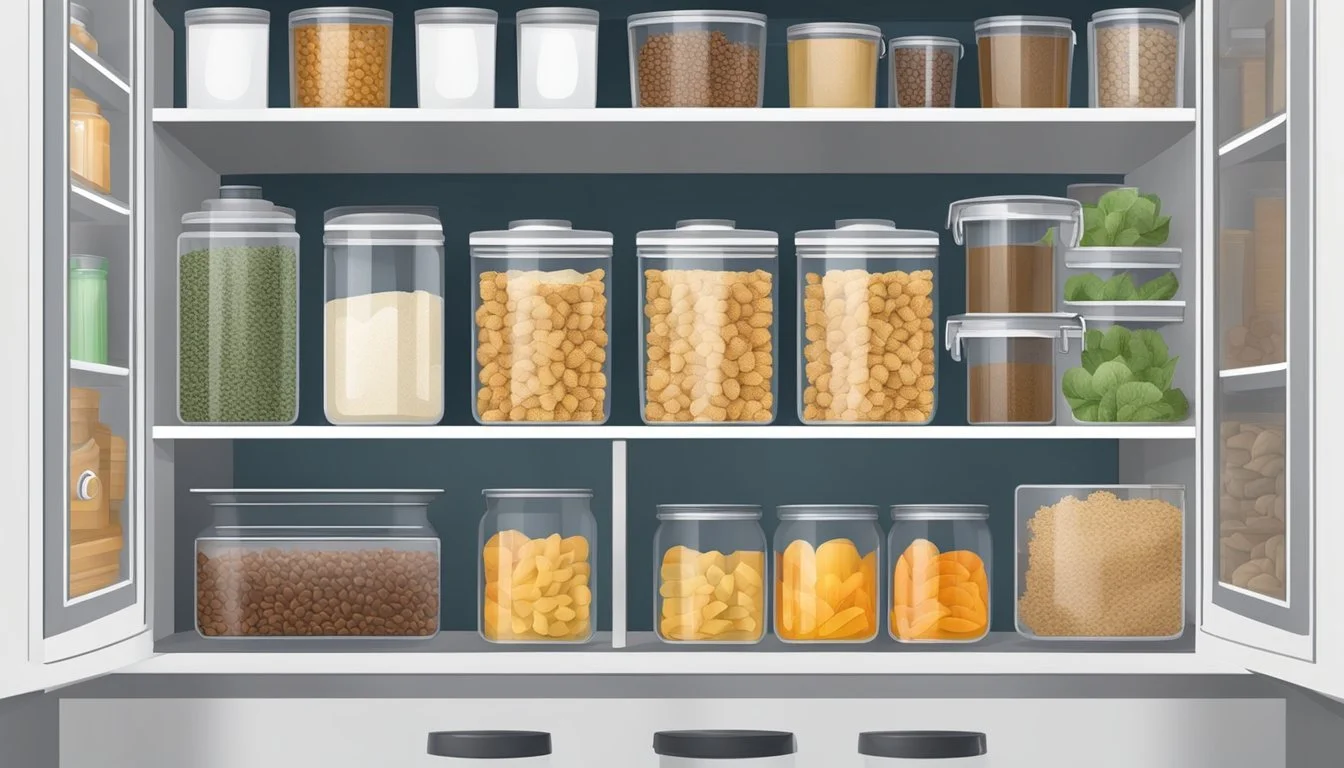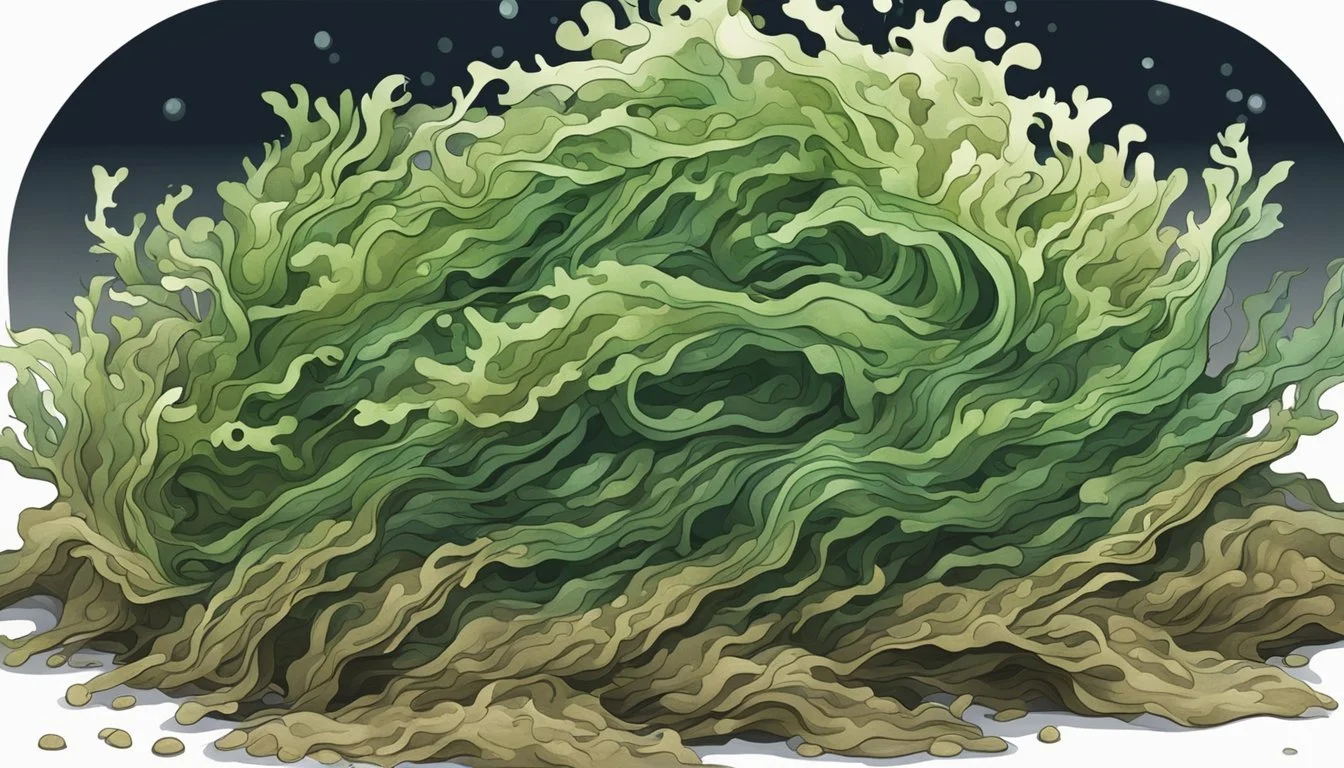Does Arame Go Bad?
How to Tell and Proper Storage Tips
Arame, a type of seaweed commonly used in Japanese cuisine, is celebrated for its unique flavor and texture. Like many other food items, arame does have a shelf life and can spoil if not stored properly. Arame can be kept for an extended period if stored in a cool, dry place, but prolonged exposure to moisture and air can degrade its quality.
Caramel is another ingredient familiar to many, widely used for its rich flavor in various desserts. When kept in optimal conditions, caramel can last up to 6-9 months, but improper storage can cause it to spoil. The introduction of heat or moisture can alter both the flavor and texture of caramel.
Just as with caramel, ensuring the quality of arame involves careful storage practices. The flavor and quality can diminish over time, especially if exposed to inappropriate environmental factors. To maintain its best quality, store arame in an airtight container away from direct sunlight.
Understanding Caramel
Caramel, known for its distinct flavor and texture, comes in various types and consists of multiple ingredients and additives. This section explores the different kinds of caramel and the components that give caramel its unique characteristics.
Types of Caramel
Caramel can be found in numerous forms, each with specific uses and textures. Caramel sauce is a pourable liquid used for drizzling on desserts or incorporating into recipes. Hard caramel candies are brittle and typically used in candies like toffee or in creme brulee crusts. Soft caramel is chewy and can be found in treats such as caramel candies, often wrapped in plastic to maintain freshness.
Homemade caramels differ from store-bought caramels primarily in preservatives and texture. Store-bought varieties may include stabilizers and additional sugars to extend shelf life and consistency. Homemade caramels, when prepared, highlight a more natural flavor since they often lack preservatives.
Ingredients and Additives
The primary ingredients in most caramels are sugar, butter, and cream. These elements determine the texture and flavor of the caramel. Homemade caramels generally stick to these core ingredients, creating a rich and authentic taste.
Store-bought caramels might contain additional additives and preservatives to prolong shelf life and improve texture. These can include glucose syrup, sorbitol, and emulsifiers to prevent crystallization and maintain smoothness. Some varieties might even contain artificial flavors and colorings to enhance visual appeal and taste consistency.
Optimal Storage Conditions
Arame and caramel both require specific storage conditions to maintain their freshness and quality. Key factors include temperature, humidity, and the type of container used.
Temperature and Humidity
Maintaining the appropriate temperature and humidity levels is essential for prolonging the shelf life of arame and caramel. Dried arame should be stored in a cool, dry place, away from direct sunlight. Exposure to moisture can cause deterioration, reducing its shelf life to less than six months. Caramel, on the other hand, is best stored at room temperature for short-term use. Avoid storing it in areas exposed to heat to prevent it from melting or spoiling. For longer storage, caramel can be kept in the fridge or freezer, where it can last several months without significant quality loss. A humidity level below 60% is ideal to prevent moisture from affecting the texture and flavor of both arame and caramel.
Containers and Wrapping
Using the right containers and wrapping techniques is crucial for preserving the freshness of arame and caramel. Airtight containers are highly recommended to avoid exposure to air and moisture. For arame, sealing it in ziploc bags or vacuum-sealed pouches can help extend its shelf life. These should then be placed in a cool, dry environment. Caramel, particularly when homemade or store-bought in bulk, should be wrapped tightly in parchment paper or plastic wrap before being placed in an airtight container. This minimizes the caramel's exposure to air and prevents it from becoming hard or dry. The use of airtight packaging ensures both arame and caramel retain their optimal texture and flavor for as long as possible.
Storing Caramels at Home
When storing caramels at home, several storage methods can help maintain their freshness. Unopened store-bought caramels can be stored in their original packaging in a cool, dry place, where they can last up to six to nine months. Once opened, transferring them to an airtight container is essential. If refrigeration is preferred, caramels should be placed in an airtight container to avoid absorbing odors from other foods. In the freezer, caramels need to be wrapped individually and then placed in a sealed container to last up to two years. Freezing helps preserve their taste and texture, ensuring they remain enjoyable when defrosted.
Shelf Life Guidelines
Dried arame's shelf life is contingent on proper storage methods, making it vital to follow guidelines to preserve its quality. Factors such as environmental conditions and storage techniques directly influence its longevity.
Generic Shelf Life
Dried arame typically has a shelf life ranging from six months to a year. It should be stored in a cool, dry place away from direct sunlight to ensure maximum freshness. While different factors, such as humidity and packaging, can affect its duration, these basic storage guidelines can prevent early degradation.
Avoid exposure to moisture which can lead to spoilage and compromise the product's integrity. Proper storage of dried arame means maintaining a stable, low humidity environment to safeguard its quality and flavor.
Expiry and Best-By Dates
The best-by date on a package of dried arame serves as a suggestion for optimal quality, rather than a strict expiration date. Consuming this seaweed past its best-by date is typically safe, although flavor and nutritional value may diminish over time.
Packaging dates can also indicate freshness, helping users gauge how long they can expect the seaweed to retain its best qualities. By adhering to best-by dates and observing any signs of spoilage, like changes in smell or appearance, consumers can ensure they use arame while it is of high quality.
Extending Shelf Life through Freezing
Freezing is an effective method to extend the shelf life of dried arame beyond the typical six months to a year. When properly sealed in airtight containers or freezer-safe bags, arame can last significantly longer in the freezer.
To freeze arame, ensure it is completely dry before sealing, as residual moisture can cause ice crystals and affect the texture upon thawing. Labeling the containers with dates provides an easy way to track storage times, promoting optimal usage and minimizing waste.
Signs of Spoilage
Identifying when caramel has gone bad is crucial for safety. Important indicators include visual and textural changes, off odors or flavors, and the presence of mold or other contaminants.
Visual and Textural Changes
Caramel's appearance is a primary indicator of spoilage. Spoiled caramel often exhibits discoloration, turning darker than its original rich, amber hue.
Texture changes are also significant signs. Fresh caramel is smooth and creamy, but spoiled caramel may become lumpy or sticky. This change in consistency indicates potential chemical breakdown or exposure to moisture, causing the caramel to crystallize or separate.
Visual cues like white patches or black specks suggest contamination or the beginning stages of mold growth, making the caramel unsafe to consume.
Odor and Flavor Alarms
Senses play a crucial role in detecting spoiled caramel. A strange odor is a strong signal of spoilage. Fresh caramel has a sweet, buttery smell, whereas spoiled caramel may emit an off-odor that can be sour, bitter, or reminiscent of fermenting substances.
Taste is another determinant. While it's not advisable to consume questionable caramel, any sour, bitter, or simply off flavor is a clear sign of spoilage. These alarming flavors indicate that the caramel has degraded, possibly due to microbial action or chemical changes.
Mold and Other Contaminants
Mold growth is a definitive sign of dangerous spoilage. Spoiled caramels may develop mold, appearing as fuzzy patches that can be white, green, or even black.
Black specks are another contaminant to watch for, signaling potential mold spores or other harmful particles. The presence of any mold means the caramel is unsafe to eat and should be discarded immediately.
Contamination can also result from prolonged exposure to air and humidity, promoting the growth of unwelcome microorganisms. Always check for these visible and olfactory cues to ensure your caramel is safe.
Regular inspection of caramel can prevent the consumption of potentially harmful, spoiled foods. By paying close attention to visual and textural changes, odors, and the presence of mold, one can enjoy caramel without health risks.
Food Safety Considerations
When dealing with caramel, certain food safety considerations must be kept in mind to avoid potential health risks and ensure that the product remains enjoyable.
Risks of Consuming Spoiled Caramel
Spoiled caramel poses several health risks. Mold growth can occur if caramel is stored improperly. Consuming mold-contaminated caramel can cause allergic reactions or more severe health problems. An unpleasant odor or unusual flavor indicates that the caramel has started to spoil.
Expired caramel may lose its characteristic sweetness and become hard, making it difficult to consume. In some cases, bacterial contamination can occur if the caramel has been exposed to contaminated surfaces or utensils, leading to foodborne illnesses.
Proper Discarding Practices
Proper discarding of expired caramel is crucial to prevent health risks. Unpleasant odors or visible mold are clear signs that the caramel should be discarded. Always check the expiration date and use-by date on the packaging.
When discarding caramel, it should be thrown away in a sealed bag to avoid contamination. If caramel is stored in the freezer and shows signs of freezer burn, it is best to discard it to ensure safety. Disposing of caramel properly helps maintain a safe and hygienic environment in the kitchen.







